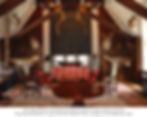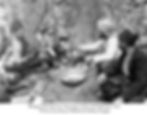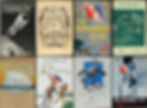Adventure is Out There: A Night at the Explorers Club
- wander woman
- Mar 5, 2018
- 5 min read
Tucked on a quiet, tree-lined street on the Upper East Side, is an elegant townhouse with a Jacobean facade. Few are aware that behind the wrought iron entranceway, lies a treasure trove of artifacts from all over the world, including a narwal tusk, Sir Edmund Hilary’s ice pick, and a chair that belonged to the last Empress of the Qing Dynasty. The building is home to the legendary Explorers Club, a social and professional society founded in 1904 to promote the exploration of land, sea, air, and space. For more than a century, the Explorers Club has been at the forefront of scientific expedition, with it’s members responsible for many of humanity’s ‘famous firsts’ including the first person to reach the North and South Poles, the first to summit Mount Everest, the first to walk on the moon, and the first to break the sound barrier.

Unsurprisingly, membership is extremely exclusive and requires a proven commitment to scientific advancement and field study. Past members have included Charles Lindbergh, Neil Armstrong, and Theodore Roosevelt — who famously included “President of the United States” in the experience section of his 1915 membership application. Today, the club continues to attract high-profile members, including the likes of Buzz Aldrin, Elon Musk, Jeff Bezos, and James Cameron.
While conceptualized as a meeting place for scientists and adventurers, the clubhouse today doubles as a living museum featuring a menagerie of treasures and taxidermy collected over the course of the club’s history. Off the foyer is an opulent members-only lounge, where explorers and their guests meet to discuss fieldwork over adventure-themed cocktails. A community bulletin board littered with flyers hangs on one of the dark, wood-paneled walls, an apparent sense of normalcy among the cabinet of curiosities. Yet, rather than advertising community-service opportunities or babysitting jobs, the postings include requests for expedition partners and assistance decoding Egyptian hieroglyphics.
I ordered myself a ‘cobra blood’ cocktail and settled into one of the red over-stuffed chairs beside an enormous elephant tusk. I struck up a conversation with the ponytailed man sitting next to me, who turned out to be a world-renowned spelunker. He regaled me with stories of his past adventures and even invited me on his upcoming caving expedition in the Cambodian jungle, which I politely declined. Perhaps sensing I was more of the glamping type, he changed the subject to the historical significance of the room’s artifacts including a wooden coffee table constructed from the hatch cover of one of the few ships that survived the attack on Pearl Harbor and the globe used by Thor Heyerdahl to plan his solo trans-Pacific journey to Polynesia in 1947.

After I finished my drink, I met up with the club’s curator and archivist, Lacey Flint, who led me on a little adventure of my own. We were greeted on the second floor by the club’s unofficial mascot, Percy the Polar Bear, who guards the hallway between the library and Clark Room, where member meetings and public lectures are held. In comparison to the Member’s Lounge, the Clark Room is sparsely decorated; however, the few objects on display represent some of mankind’s most impressive feats, such as the sled hanging above the door, which was used in the first successful North Pole expedition in 1909. The walls are lined with a handful of the club’s iconic red, white, and blue flags, which have accompanied members all over the world since 1918. While seemingly identical, each flag is numbered and tells a different story. For example, Flag 161 is the only item to have traveled to both the world’s highest peak and the ocean’s deepest depth.

Upstairs is the legendary trophy room featuring an expansive collection of exotic taxidermy animals, several of which were donated by Teddy Roosevelt himself. Today, the club is focused on conservation and no longer accepts animal trophies; however, their continued display remains a source of contention among members.

Regardless of one’s position, it is difficult not to be captivated by the room’s more peculiar pieces, such as the stuffed sperm whale penis and the 250,000 year old wooly mammoth tusk, whose meat was supposedly on the menu of the club’s 1951 annual dinner. The Explorers Club annual dinners have become a legend in their own right for serving unusual delicacies with an Andrew Zimmern flare such as a 235-pound ostrich, pickled bull penises, and chocolate strawberries topped with maggots.

Throughout it’s history, the Explorers Club has distinguished itself by continuing to push the boundaries of terrestrial exploration and human fortitude; yet, the club failed to extend the same enthusiasm to charting new social frontiers. Despite their notable contributions to the field, women were refused membership until 1981.
Marguerite Harrison was one of the many women snubbed by the Explorers Club. In 1924 she documented the Bakhtiari tribe on their annual migration across what is now Iran. Upon her return, Harrison’s contributions were promptly minimized. The newspapers, for example, were more interested in reporting whether or not she “had become enamored of a sheik” than in her ethnographic observations. The Explorers Club, meanwhile, only invited her exhibition partners (both male) to join their ranks.
Irate at the blatant injustice, Harrison began hosting “indignation meetings” at her apartment for fellow female explorers. By 1925, these casual meetings had formalized into an official female-only counterpart, the Society for Women Geographers, which boasted an equally impressive membership list including Amelia Earhart, Jane Goodall, Eleanor Roosevelt, and Margaret Mead.

In today’s digital age, the entire concept of exploration feels a bit antiquated, eliciting feelings of nostalgia rather than excitement. Our maps are not only fully charted, but are constantly updated by satellite technology, which in turn has made even the most remote areas of the world instantly accessible. Simultaneously, the rising popularity of adventure-travel has muddied the identity of explorers themselves. For example, does anything but title separate a field photographer from a millennial with an iPhone? The modern authenticity of the explorer has been further endangered by the face and scope of today’s expeditions, which increasingly center around remote-controlled drones, robots, and satellites rather than deep-sea divers, geographers, and mountaineers. The arduous, man-powered expeditions that defined “the golden age of exploration” have all but disappeared.
Yet, it would be a mistake to conclude that our greatest achievements are behind us and there is nothing left to discover. There are still vast areas of the earth (not to mention space) that remain unexplored and unknown. While it is true that many modern expeditions are less physically demanding than those of the past, they require equal if not greater intellectual risk and fortitude, which shouldn’t be dismissed merely because they are less likely to result in death, injury, or in the case of one particular arctic expedition, cannibalism. The Explorers Club certainly has a storied past, but that doesn’t diminish its relevance today. After all, as my ponytailed companion explained, "any rich asshole can climb Mt. Everest these days.”

The Explorers Club
46 East 70th Street
New York, NY 10021
For more information on talks and other public events visit their website: https://explorers.org//events/list
